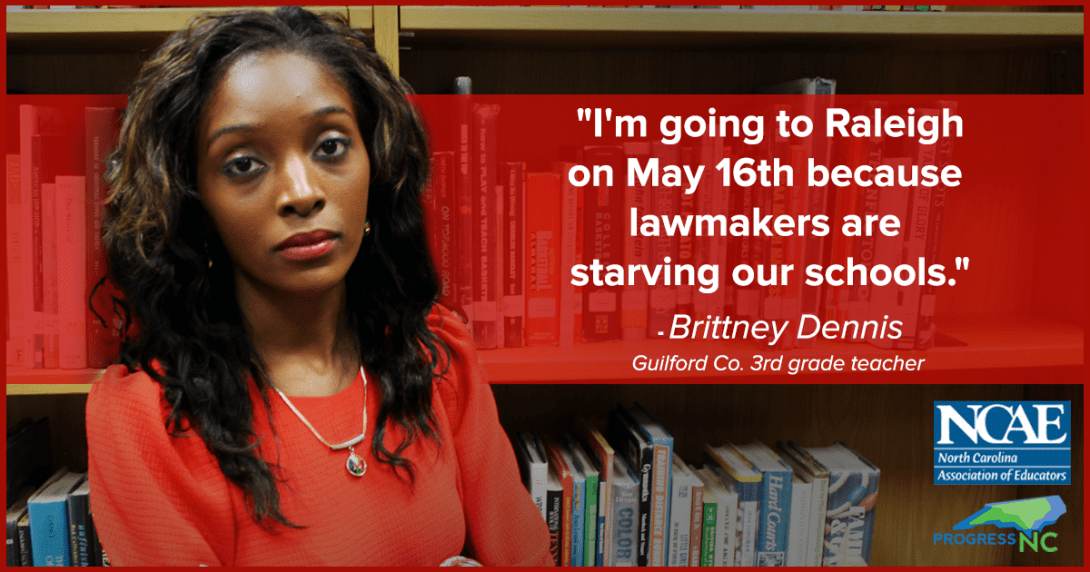May 16: How N.C. Journalists Can Break New Ground

North Carolina Public Schools Day of Advocacy Facebook page
Authors’ note — News Voices: North Carolina is a project of Free Press. Our mission is to give people a stronger voice in their communities by giving them a greater voice in local news. Check out our perspective on the upcoming teachers’ strike in North Carolina, and how journalists can engage:
North Carolina teachers will soon shut down 13 school districts and counting — including the 5 largest in the state — for a May 16 day of action timed with the opening of the state legislative session.
Thousands are taking a personal day to journey to Raleigh for the opening of the North Carolina General Assembly. Their demands are outlined here.
This is a first in the history of the state.
Regional outlets including EdNC, NC Policy Watch, The News & Observer and The Charlotte Observer have already covered the upcoming strike.
Yet as this story continues to unfold, we see a monumental opportunity for journalists to further engage in deep relationship-driven storytelling — the kind of storytelling that News Voices is working to help spark as part of our vision for a more just media and society.
What’s happening and why
Everyone has something at stake in the debate over public-education funding. Parents, educators, students, activists, school-support staff, entrepreneurs — anyone who cares about North Carolina’s children likely has a strong and informed perspective.
For a greater sense of what drove teachers to take this action — even in the face of state laws against work stoppages — consider these points highlighted on the May 16 coalition website:
-
North Carolina is 39th in the nation for per-pupil spending. We are 37th in the nation for teacher pay. Almost 25 percent of North Carolina’s children live in poverty.
-
The jobs of over 7,452 North Carolina teacher assistants have been cut since 2008.
-
The average cost for a family health insurance plan for a state employee is $9,576.
-
Thousands of North Carolina teachers work second jobs and many public-school workers qualify for public assistance.
The lack of fair pay and benefits disproportionately impacts teachers of color, queer and trans teachers, and working-class teachers.
An opportunity for strong community reporting
The May 16 story is a chance for newsrooms to transcend “expert” soundbite-driven story gathering and instead amplify the voices we don’t hear from enough on issues of poverty, equality, child welfare, public spending and more.
That means moving beyond covering the “news” of the day of action into covering the structural issues at play that have led to the strike.
Thousands of school supporters are expected to gather in Raleigh on May 16, and thousands more will be invested in the outcome. Many of them have never spoken to a reporter, but they have stories to tell about how public education affects their lives.
We encourage reporters and newsrooms across the state to use this opportunity to pursue engaged, community-oriented journalism that counteracts how our media have harmed and silenced people of color, queer people and poor communities.
Ask the right questions to strengthen relationships & equity
Sparking meaningful relationships with communities requires time, humanity and authenticity. Here are a few questions to consider for journalists covering the story in North Carolina — or anywhere teachers are rising up:
-
What are the history and context that led to this day of action? Can you identify other ways that teachers and their supporters have advocated for themselves and for the education of North Carolina’s youth?
-
How do that history and context inform the day of action?
-
Whose stories are you telling? Are you talking to teachers, students and parents?
-
Are you telling stories that lift up voices from communities of color? Queer and trans communities? Working-class/poor communities?
-
Will you continue to cover teacher organizing after the day of action? What could you do to continue shining a light on all of these issues beyond the day of action?
-
What was your news organization’s relationship with teachers prior to this round of organizing? What will it be in the future?
-
How are you in regular conversation with teachers? How could you hold these discussions on an ongoing basis?
-
How could your organization continue to engage with communities and stakeholders impacted by public-education funding?
As you explore these questions over time, we believe you’ll find the seeds of new and vibrant relationships with people across your community.
Plant them, tend them and help yield a more fruitful future for yourself, your reporting, your audience, your newsroom, your neighbors — and all the people of North Carolina.